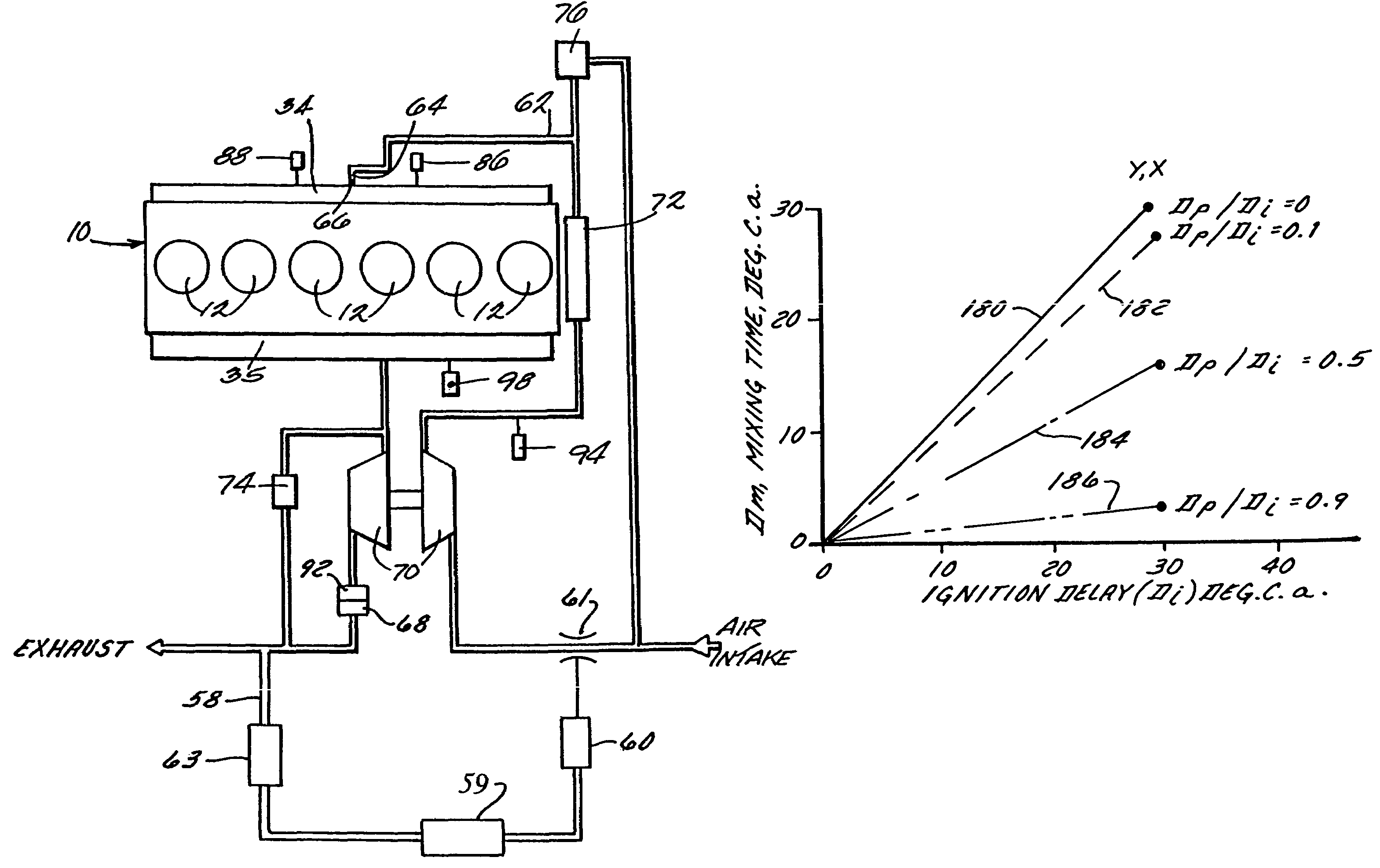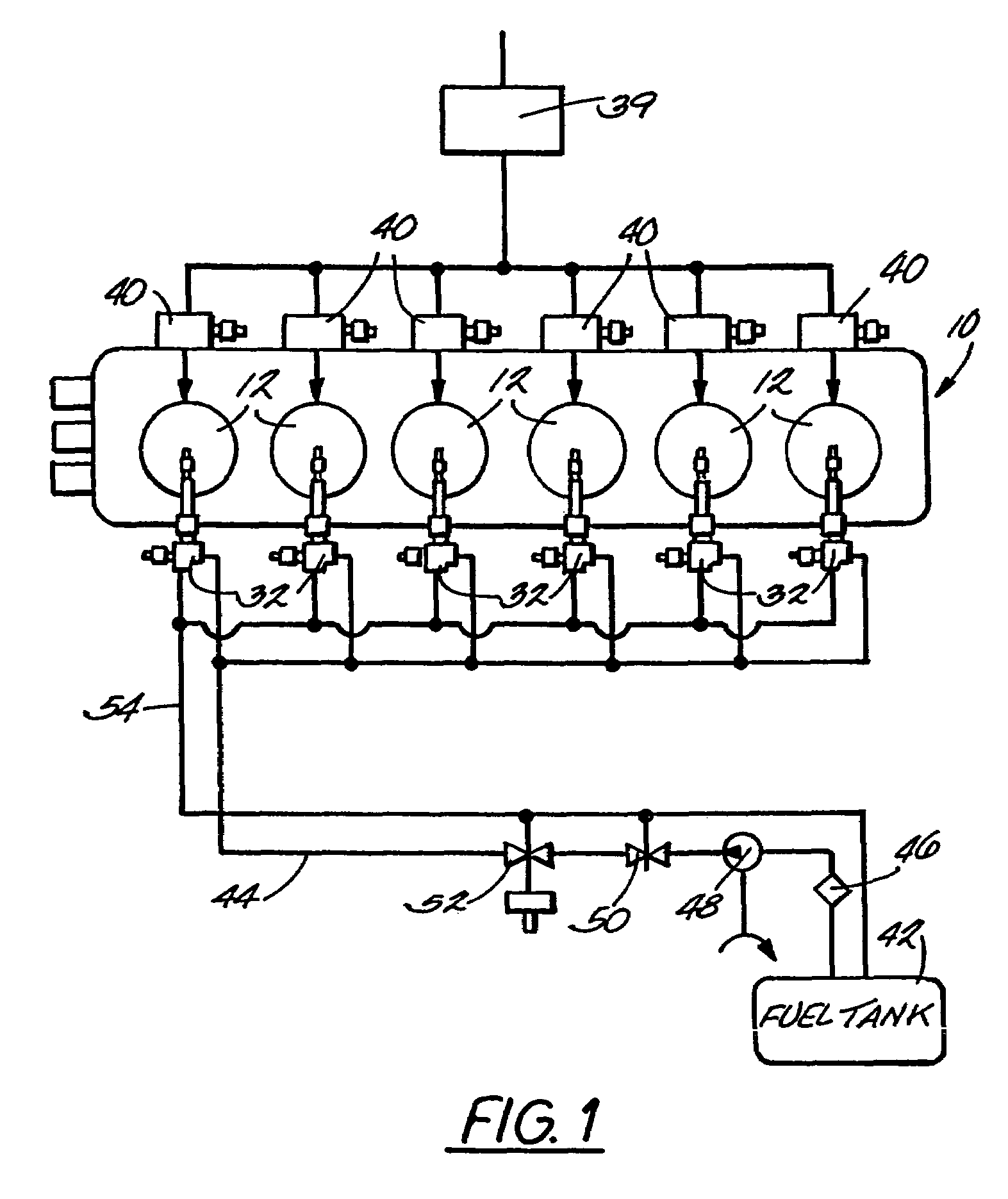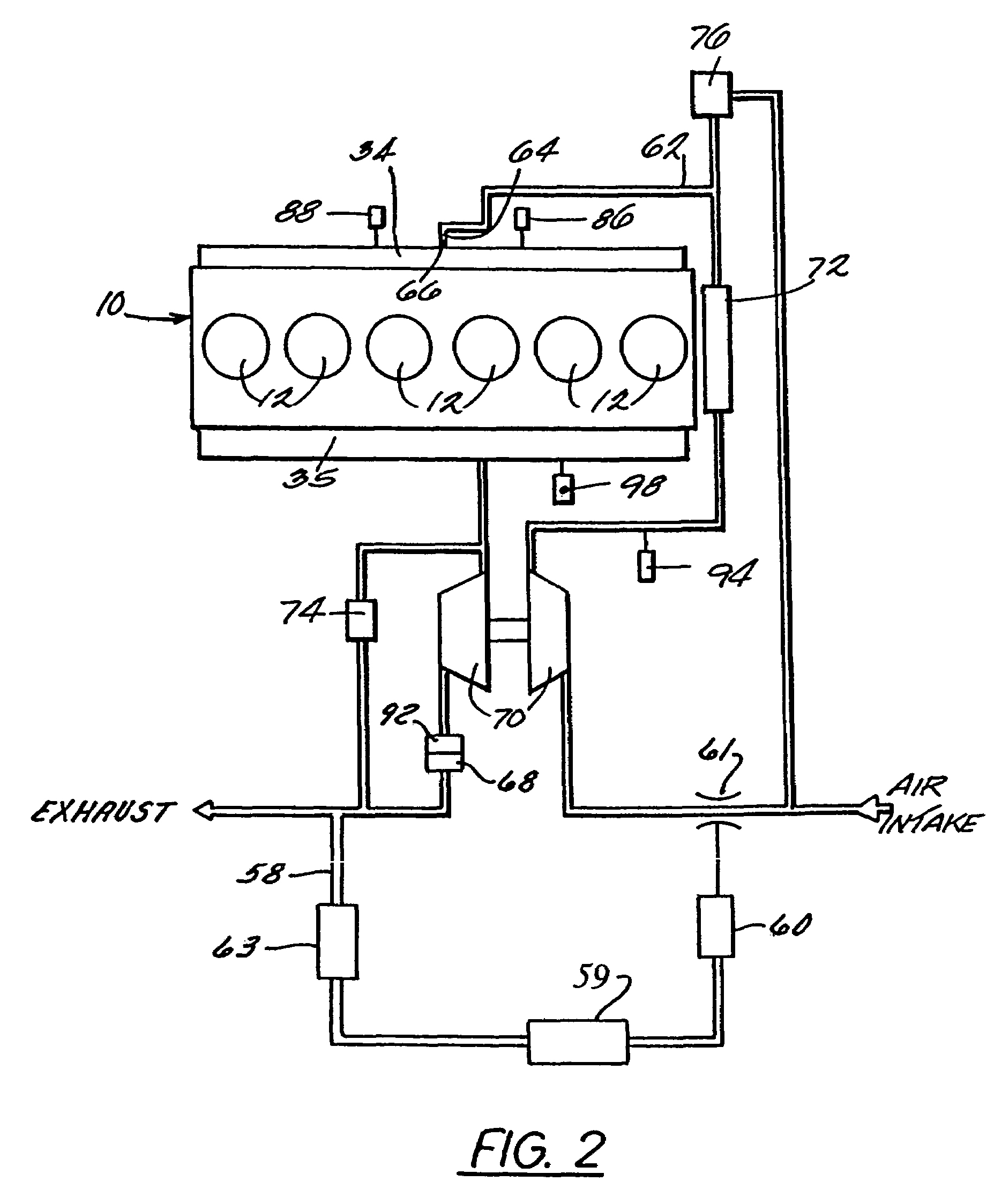Multi-fuel compression ignition engine
- Summary
- Abstract
- Description
- Claims
- Application Information
AI Technical Summary
Benefits of technology
Problems solved by technology
Method used
Image
Examples
Embodiment Construction
1. Resume
[0040]Pursuant to the invention, pilot fuel injection and / or ignition are controlled in a pilot ignited compression ignition engine so as to maintain a relationship Dp / Di of <1, where Dp is the duration of the pilot fuel injection event and Di is the ignition delay period, as measured from the start of initiation of pilot fuel injection (Tp) to the start of pilot fuel autoignition (Ti). Although this control proceeds contrary to conventional wisdom, the inventors have discovered that the mixing period (Dm) resulting from maintaining an ignition delay period that is longer than an injection period maximizes ignition intensity by permitting the injected pilot fuel to become thoroughly distributed through and mixed with the second fuel in the combustion chamber prior to ignition. This, in turn, results in improved premixed burning of a nearly homogeneous mixture of the pilot fuel, the second fuel, and air and dramatically reduced NOx emissions. The second fuel may be either a ...
PUM
 Login to View More
Login to View More Abstract
Description
Claims
Application Information
 Login to View More
Login to View More - R&D
- Intellectual Property
- Life Sciences
- Materials
- Tech Scout
- Unparalleled Data Quality
- Higher Quality Content
- 60% Fewer Hallucinations
Browse by: Latest US Patents, China's latest patents, Technical Efficacy Thesaurus, Application Domain, Technology Topic, Popular Technical Reports.
© 2025 PatSnap. All rights reserved.Legal|Privacy policy|Modern Slavery Act Transparency Statement|Sitemap|About US| Contact US: help@patsnap.com



